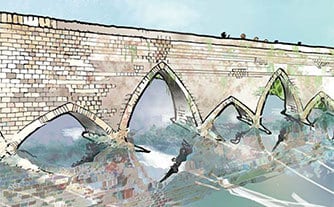Blog
Two years of living Graphic Novelly – 2

Part 2
Using live models and getting your drawing chops up to speed.
I wish I could pretend that I knew a lot of this stuff all along, but alas, (reference steep learning curve mentioned earlier). I ended up quite early on deciding to use live models for my main characters and advertised at the University of Regina and other places by posting ads on the bulletin boards and posting my poster other places. Carfac Saskatchewan is an artist’s support program that provides workshops and other services to artists. They publish and provide the Saskatchewan Visual Arts Handbook for free. This booklet is an extremely good resource for a number of things artists need, especially regarding the business side of being an artist. Their website is a gold mine of information and documents that you may need.
http://www.carfac.sk.ca/home
If you are going to hire models, you should look at the modelling contract samples on the Carfac site. They also have information on the etiquette of working with models. I was lucky to have several individuals express interest in being models for the novel. I met with them, explained my project and showed them some of my artwork. I arranged to meet with them in a public place and used well-lit (by daylight) indoor areas at the University for some of the photography sessions. Some models were photographed out of doors. I found that when choosing a model, how they appeared in life and in photographs was quite different than how they appeared in the artwork. Somehow, the rendering of a person’s face in a graphic can emphasise qualities that in the end do not fit your character. If you find a model you like, make sure you draw them and see if they maintain the feel of your character before committing.
When photographing models I did a number of head shots from all around them and from angling up (worm’s eye view) and down (bird’s eye view) as well as having them speak vowel sounds to get a record of their features while vocalizing. I also had them show certain emotions and use props such as a wooden practice sabre and a hiking stick. As I would add clothing to the model I did not need my models to wear a particular costume, rather just close fitting clothing, short sleeves etc. to get a good view of their poses. The model was run through all the poses their character would assume in the book and also be asked to walk, run or do other poses that would be needed. Some models were very good at emoting and some were not. You want a model who can express their feelings clearly. There are some things that help – one is having the model repeat parts of the script to capture the mood and also (as one model suggested to me) it may be wise to have a small hand mirror so that the model can see their expressions as well. I found that some models, if left to make some action or emotive choices of their own provided material that was better than I had already story-boarded. It pays to let your model act out scenes in their own way as well. I also have agreed that I would not publish their images on the internet, that the photographs were only for my use on the graphic novel or, if I was working with another artist, that that artist may have use of the material to draw from only.
There are a number of good pose books that can be helpful for practicing drawing and for ideas of what pose looks may work in the story. I have included a few books on figure drawing as well. Many of these books can be obtained at the library or cheaply from ABE Books (an online second hand book seller) The Human Figure in Motion – Eadweard Muybridge (better resource for animators than graphic novelists) Virtual Pose series by M. H. Chakkour (an okay resource for static undraped male and female models but the lighting is poor for good shadows) Pose File 7 ( an out of print Japanese publication that is expensive to obtain but well done. There are other editions but I have not been able to afford them). Anatomy for the Artist – S. Simblet (a gorgeous volume that celebrates the human form). Facial Expressions – A visual reference for Artists. Mark Simon (A good resource although the images are small and not always clear enough. Provides a bit of a guide for what you might want from your model(s). There is a children’s version of this book as well.) The Artist’s Complete Guide to Facial Expression. Gary Faigin. (This book is very useful and provides deep understanding of facial muscles and how they shape human emotional expression).
There are other books that provide “comic book poses” for superhero and fighting poses as well as internet sites. Always be aware of copyright on images. I have also used movies as a resource for poses and have practiced drawing action and gesture from movie scenes to get a feel for how a scene might look and how I might pose my models.
If you have a chance, get involved with a class or group that meet regularly for live model drawing. An open model group can be very helpful for practicing gesture and quick model sketching as well as longer pose drawing with a nude model. There are books and internet sources for this, but it is just not the same. There is nothing like drawing from life.